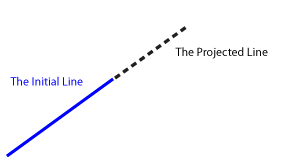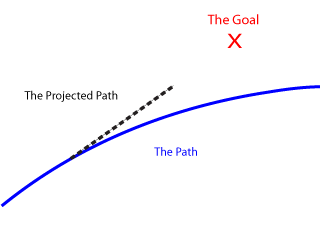The path is an allegorical concept that has real world practicality.
Have you ever felt like everything was firing on all cyclinders? Things were going your way? You could do no wrong? You’re in the zone.
That is what it’s like when you walk the path.
Others call it aligning with god (Christianity or other monotheistic religions), matching the frequencies of your desires (Law of attraction or other new age philosophies), playing in the sunshine of your expanded self (Busting Loose from the Money game), or channeling a source of creative power (artists, mystics, and psychics) What lies in common between all of these interpretations is the idea that you are linking up with some greater force, and by combining your power, you create, expand, and experience effortlessly.
The idea of walking a path implies destiny, purpose, and power. And don’t tell me you don’t love to feel those feelings.
Yet, if there are so many interpretations of this phenomenon, then why believe in this one? For me at least, it is helpful to understand life in terms of myself and the path, and in terms of walking and trying to walk the path. This is because I myself and the path that I seek have two fundamentally different natures – let’s call them planning and unpredictability – and understanding these natures allows for a greater awareness and a richer experience of life.
What you need to know is, like the Tao, the path has a slightly irregular nature about it that makes it quite elusive both to understand or connect with on any practical level. Take this reading from the Tao Te Ching,
“It can’t be approached or withdrawn from, benefited or harmed, honored or brought into disgrace. It gives itself up continually. That is why it endures.”
This sort of language is relentlessly obtuse and often seem like it’s just messing with you. Here’s my version:
You are always trying to find the path or walk the path and when you do all is right in your world. However, once you believe you are on the path you are now on your way off the path. And yet it is all good.
Damn, that didn’t make a hell of a lot of sense though it sounded cool. In this enigmatic form is an oft-misunderstood truth about reality: you are not the path, you strive to walk the path, and in that striving you fall away from the path.
Ok screw it, other far wiser figures have tried and failed to do in history what I am trying to communicate to you now. Let’s try it in picture form.
An Example
See this line?

If the line is moving from left to right, can you predict where it is likely to go?
It’s not rocket science. Here, I’ll help you.

Congratulations! You just engaged in one of the most deeply ingrained mechanisms of your mind, so habitual it is most likely beyond your awareness that there is anything special about it at all.
This exact phenomenon is the most universal filter for how you organize your experience. But it is not how experience itself, or “The Path” is organized.
Not at all.
Now imagine that you have a slight change in perspective. Imagine you found out that the line you projected from is actually a very slight curve. Now if you continue to extrapolate with linear thinking, eventually where you believe the line will go will actually diverge more and more from the curve.

To add some real world significance, lets say that these lines moving from left to right represents experience through time. If you live your life as if the experience you believe will happen, and thus project, will happen, then eventually you move out of alignment with what the experience of life itself is. How many times has this happened to you? A business deal or relationship fell through “suddenly”? Or more simply, traffic “unexpectedly” became far worse thus making you late for work?
These figures are meant to visually aid your understanding of this phenomenon. Try going back and substituting “Real experience” for “Initial Line” and “Expectation” for “Projected Line.” Or to stick with the nouns describing their natures, “Planning” and “Unpredictability” I like to see it as “The Path” and “The Projected Path” respectively. Ironically, it’s trying to walk the path that causes you to create the projected path. More on that later.
What does this unpredictable nature matter then? Well nothing, unless your projection is more valuable to you than where the Path is actually taking you. That’s not that bad, you think. Until you bring goals into the picture and then you realize this phenomenon happens all the time and when it does happen it is a big deal.

The truth is that you don’t control where the Path leads and thus, using linear thinking, are doomed to feel like you continually fail at “willing” your goals into existence. You can’t will yourself off the Path for very long because the farther you stray from the path, the harder it is to continue, until eventually you meet the point of intervention.
This concept isn’t terribly hard to grasp on a conceptual level, although it is murder to integrate into practical thinking and there is a reason for that. With this new information, you might think you have all the knowledge required to walk the path and set your life straight.
But here’s the thing, in thinking that right now are you walking the path or trying to walk the path? Are you experiencing or projecting? What exactly is the difference, and what can you do about it?
Find out next time.
Even a spiritual path can become a dead end, as you’ve so eloquently pointed out. As our pal Krishnamurti said, Truth is a pathless land. Great stuff as usual.